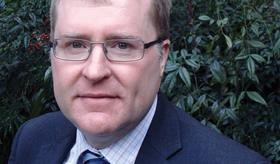Anita Charlesworth, Candace Imison and Richard Murray look in detail at solutions across the different policy levers for workforce, including training, pay, staff retention and skill mix

 Anita Charlesworth
Anita Charlesworth
In April, the interim report of the NHS Workforce Implementation Plan is due to be published. This plan needs to set a clear route map to avoid a vicious cycle of growing staffing shortages and declining quality of care.
It is hard not to lose heart in the face of the huge scale of the challenge; hospital, mental health and community trusts already report that they are short of 100,000 health workers. This staffing gap would grow to almost 250,000 full-time equivalent workers by 2030 if current trends continue.
While pessimism is understandable, all is not lost. There is no silver bullet, but in our report we map out how sustained action and investment could make a real difference over the next decade.
Gap between supply and demand
Nursing and general practice are two key areas where the gap between supply and demand is greatest. Reducing nurse shortages will only be feasible if there is a substantial expansion in the numbers in training and a major reduction in the drop-out rate during training. This means significantly increasing financial support for nursing students. Reforms in this area have exposed trainee nurses to significant financial problems.
The only way forward is a new model of general practice with an expanded multidisciplinary team drawing on the skills of other healthcare professionals
 Candace Imison
Candace Imison
In common with the Council of Deans, we argue for non-means-tested “cost of living” grants on top of the current loan scheme. This should be pitched at around £5,200 a year so that nurses can access a total package of support that broadly matches the income from working at the national living wage. This is necessary but still not sufficient: the availability and quality of clinical placements for student nurses is another key priority for reform.
Efforts to increase the number of GPs need to continue but the stark reality is that, even with all the actions we identify, our calculations show there is no way to fully close the gap. The only way forward is a new model of general practice with an expanded multidisciplinary team drawing on the skills of other healthcare professionals.
The new GP contract and long-term plan support this shift but the key issue is the speed, consistency and quality of implementation across the NHS. The workforce implementation plan needs to clearly outline how this model will be rolled out safely across the country, and at pace.
Beyond the specific actions on nursing and general practice, the workforce implementation plan must focus on how the NHS can become a better employer and a place where staff want to build a career. Meaningful action on equality and inclusion must be at the heart of this. It is simply unacceptable that a quarter of black and minority ethnic NHS staff do not believe that their organisation provides equal opportunities for career progression or promotion.
Reducing retention
 Richard Murray
Richard Murray
Being a better employer will help reverse the decline in retention rates we have seen over recent years. Beyond this, we need to recognise that attrition is particularly high at the beginning and end of people’s careers. The plan needs to include measures to support staff at these key times.
To avoid nurse shortages acting as a major brake on the delivery of the NHS long-term plan, international recruitment will need to increase
The NHS pension scheme is frequently cited as a barrier to retention, particularly for more experienced staff, who have been impacted by changes to wider pension policy. NHS Employers have argued for reform modelled on the local government pension scheme, where employees can halve contributions in return for half the benefit – this makes a great deal of sense.
Rapidly changing patient needs and technological advances mean all frontline staff will need to adapt and enhance their skills. Current progress is much too slow.
The failure to invest in the development of existing staff also sends a powerful, negative signal of the NHS’s commitment to its people. The budget to invest in the skills and development of the million-plus people currently working in the NHS amounts to just £76 a year per full-time equivalent member of staff.
This is pitifully low and cannot continue in an NHS that is serious about its people and modernising services. A fourfold increase in the current workforce development budget is required to accelerate change and support people.
While policy action and investment could transform the outlook for nurse staffing shortages over the next decade, the prospects for the next five years are deeply worrying. To avoid nurse shortages acting as a major brake on the delivery of the NHS long-term plan, international recruitment will need to increase.
We estimate that 5,000 internationally recruited nurses will be needed each year until 2023-24, and this needs a new approach. Without additional international recruitment there is the real risk that the long-term plan will be no more than a wish-list.
The Workforce Implementation Plan presents a huge opportunity to reset policy and set out a series of measures which, if properly funded and well implemented across the NHS, would over time create a sustainable model for general practice and help to eliminate nursing shortages. April’s publication couldn’t be more important.



























1 Readers' comment